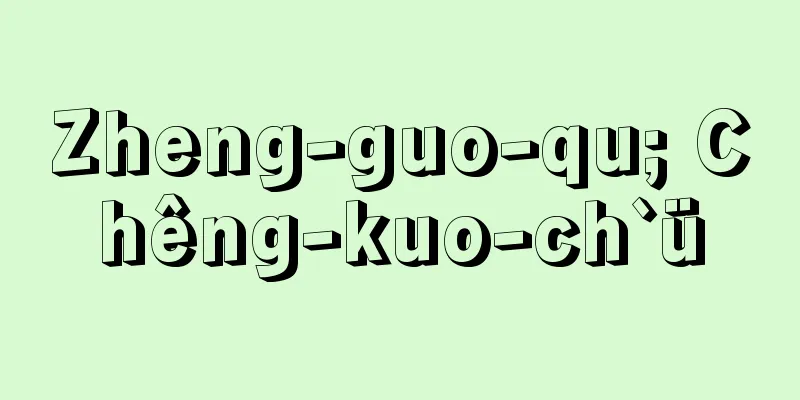Book classification system - toshobunruiho

|
A classification method for efficient use of books in libraries. Since ancient times, libraries have devised their own classification systems to systematically organize their collections. The Pinakes (2nd century BC), created by Callimachus at the Library of Alexandria, is said to have divided Greek documents of the time into 12 categories. Until the 19th century, library classifications were often based on broad categories that applied to each library's collections. This is because, unlike academic classifications, library material classifications were primarily intended to organize books on the shelves. [Yukio Fujino and Takeo Noguchi, January 21, 2021] historyIn the second half of the 19th century, with the emergence of public libraries, a simple common classification system that covered all fields was required. Melvil Dewey's (1851-1931) Decimal Classification (DC, first published in 1876) divided all fields into nine categories using numbers (with an additional zero for encyclopedias, yearbooks, etc. as a general notation), and each category was further divided into ten categories. This classification system was adopted by American public libraries because it was easy to remember and use, and countries around the world, including Europe, followed suit and began to develop their own decimal classification systems. At the same time, there were attempts to theoretically construct the classification of knowledge, the academic system that forms the basis of publications. One example is Henry Bliss's (1870-1955) Bibliographie Classification , published between 1940 and 1953. For academic libraries with collections of over 100,000 books, the method of dividing books into detailed categories using only numbers is not necessarily easy to use, and it is considered better to have more basic categories. When the Library of Congress completed the Library of Congress Classification (LCC), which combines two letters of the alphabet and numbers for large libraries, and was completed in 32 volumes in the late 1920s, more and more university libraries and other institutions began to switch to this system. In the 20th century, it became necessary to devise a method of theoretically classifying the subjects of research papers (bibliographic classification) in addition to the classification for arranging books on shelves (shelf classification). The Universal Decimal Classification (UDC, first published in 1905, the Japanese version is an abbreviated version from 1955) is based on Dewey's Decimal Classification and allows detailed classification by combining complex subjects with symbols. The Colon Classification (CC, first published in 1933) by the Indian library scientist SR Ranganathan (1892-1972) was a method of analysis and synthesis that connected the constituent units (facets) of a subject. Some information centers that handle scientific and technical materials use the Universal Decimal Classification, or assemble "facet classifications" for each field that incorporate the methods of the Colon Classification. [Yukio Fujino and Takeo Noguchi, January 21, 2021] JapanIn Japan, too, libraries established during the Meiji period each created their own classification systems, but the Nippon Decimal Classification (NDC; first edition 1929, 10th revised edition 2014), which is based on Dewey and takes into account Japanese history, geography, religion, language, etc., gradually took hold and is now used by public libraries, university libraries, and school libraries throughout the country. The National Diet Library once used the Nippon Decimal Classification to classify Japanese books, but in the 1960s began creating its own National Diet Library Classification (NDLC; first edition 1963-1968, revised edition 1987). The Nippon Decimal Classification consists of a main table, a supplementary table, and a correlation index. The main classification table divides into 10 categories: general, philosophy (including religion), history (including geography), social sciences, natural sciences, technology/engineering, industry, arts, languages, and literature, further divided into decimal classes. Items are divided into three-digit numbers, and classifications are shown up to the last three decimal places (e.g., 829.88 = Sanskrit (82 is Chinese and Oriental languages), 338.156 = bills and checks (330 is economics)). The auxiliary table is a table of commonly used detailed classifications, including format classifications (e.g., 05 serial publications), geographic classifications (e.g., 11 Hokkaido region), ocean classifications, and language classifications (e.g., 69 Portuguese language), and is widely applicable. The correlation index is an index that identifies classification symbols from words, but lists all aspects and relationships (e.g., Barley [Botany] 479.343, Barley [Agricultural Economics] 611.34). Books in the same classification are generally distinguished by book symbols, which are the author's initials written in katakana or roman letters. [Yukio Fujino and Takeo Noguchi, January 21, 2021] "How to Use NDC" edited by Kiyoshi Mori (1966, Japan Library Association)" ▽ "Classification and Cataloging" edited by Junro Goto (1974, Japan Library Association)" ▽ "Catalogue and Classification of Library Materials" revised 5th edition (2015) edited and published by the Japan Library Research Association" [References] | |Source: Shogakukan Encyclopedia Nipponica About Encyclopedia Nipponica Information | Legend |
|
図書館での図書の効率的利用を図るための分類法。古来図書館は、蔵書の系統だった組織化のためにそれぞれ独自な分類体系を考案していた。アレクサンドリアの図書館でカリマコスがつくった『ピナケス』(前2世紀)は当時のギリシア語文献を12部門に分けていたという。19世紀までの図書館の分類は各館のコレクションに当てはめた大区分を主とするものが多かった。学問分類と異なり、図書館の資料分類は書架上の本をまとめる目的が大きかったからである。 [藤野幸雄・野口武悟 2021年1月21日] 歴史19世紀後半、公共図書館の出現とともに、すべての分野を網羅した簡便な共通分類法が求められるようになった。メルビル・デューイMelvil Dewey(1851―1931)の『十進(じっしん)分類法』Decimal Classification(DC。初版1876年)は、数字を使って全領域を9区分し(別に0を総記として百科事典・年鑑等にあてた)、さらに各区分の下も10区分していく方法をとった。この分類法は覚えやすく使いやすいため、アメリカの公共図書館の採用するところとなり、ヨーロッパをはじめ世界各国がこの方式にのっとり、自国の十進分類法を考えるようになった。同時に、出版物の基となる学問体系、知識の分類を理論的に組み立てようとの試みもあった。1940年から1953年にかけて出版されたヘンリー・ブリスHenry Bliss(1870―1955)の『書誌分類』Bibliographie Classificationはその一例である。 蔵書量10万冊を超す学術図書館では、数字ばかりを細かく区分していく方法はかならずしも使いやすくはなく、基本区分の多いほうがよいとの立場から、アメリカ議会図書館がアルファベット2文字と数字を組み合わせた大図書館用の『アメリカ議会図書館分類法』Library of Congress Classification(LCC。1920年代末に32分冊完成)を完成させると、大学図書館などは、これに移行するところが増えた。 20世紀に入ると、本を棚に配架するための分類(書架分類)とは別に、論文等の主題を理論的に分類する方法(書誌分類)を考案する必要が生じてきた。『国際十進分類法』Universal Decimal Classification(UDC。初版1905年、日本語版は簡略版1955年から)はデューイの十進分類法を基にし、複合主題を記号で組み合わせる方法で細部までの分類を可能にしている。インドの図書館学者ランガナタンS. R. Ranganathan(1892―1972)の『コロン分類法』Colon Classification(CC。初版1933年)は主題の構成単位要表(ファセットfacet)をつなぐ分析・合成の手法であった。科学技術資料を扱う情報センターでは『国際十進分類法』を使ったり、『コロン分類法』の方法を取り入れた各領域の「ファセット分類法」Facet Classificationを組み立てて使ったりしているところがある。 [藤野幸雄・野口武悟 2021年1月21日] 日本日本でも、明治期設立の図書館はそれぞれ独自の分類法をつくっていたが、デューイに基づいて、日本の歴史、地理、宗教、言語などを考慮した『日本十進分類法』Nippon Decimal Classification(NDC。初版1929年、新訂10版2014年)がしだいに定着し、現在では全国の公共図書館、大学図書館、学校図書館に採用されている。国立国会図書館では、和書の分類に『日本十進分類法』を使用した時期はあったが、1960年代から独自の『国立国会図書館分類表』National Diet Library Classification(NDLC。初版1963~1968年、改訂版1987年)の作成にとりかかった。 『日本十進分類法』は本表と補助表、相関索引からなっている。分類本表は、総記、哲学(宗教を含む)、歴史(地理を含む)、社会科学、自然科学、技術・工学、産業、芸術、言語、文学の10類をさらに十進法で区分する。数字3桁(けた)で項目まで分け、小数点の下3桁までの分類が示されている(例829.88=サンスクリット語〈82は中国語・東洋諸言語〉、338.156=手形、小切手〈330は経済〉)。 補助表は共通に使える細目区分の表で、形式区分(例‐05逐次刊行物)、地理区分(例‐11北海道地方)、海洋区分、言語区分(例‐69ポルトガル語)があって広く適用できる。相関索引はことばから分類記号をつきとめる索引であるが、あらゆる観点と関連性が列記してある(例、むぎ[植物学]479.343、むぎ[農業経済]611.34)。同一分類のなかの各図書の区別は一般に著者の頭字を片仮名またはローマ字で記号化した図書記号によって行っていく。 [藤野幸雄・野口武悟 2021年1月21日] 『もり・きよし編『NDCのつかい方』(1966・日本図書館協会)』▽『後藤純郎編『分類と目録』(1974・日本図書館協会)』▽『日本図書館研究会編・刊『図書館資料の目録と分類』増訂第5版(2015)』 [参照項目] | |出典 小学館 日本大百科全書(ニッポニカ)日本大百科全書(ニッポニカ)について 情報 | 凡例 |
>>: Books and references - Toshobunin
Recommend
Apollōnios Dyskolos
A Greek grammarian from 2nd century Alexandria. Da...
Mount Kanmuriki
A mountain located in the southern end of the Naga...
Young women - Onago Wakaishu
...an age group of young women that was once form...
Sunagawa [city] - Sunagawa
A city in the northern part of the Ishikari Plain ...
Atticus
…The idea of a calendar did not exist in Rome o...
Cylindrical gear - Entouhaguruma
...For this reason, extremely small numbers of te...
Dive bombing - Dive bombing
…When attacking a city, night attacks were common...
Consistori del Gai Saber (English)
...Occitan was, so to speak, a conquered language...
Leo
(Leo)[1] III. Byzantine Emperor (reigned 717-741 )...
Anchor beetle
A species of the family Cicindelidae in the order ...
Urmia
A city in northwestern Iran. Also known as Urumiye...
Graduate School
…In contrast to East Germany, which adopted a uni...
Court investigator - court investigator
(1) Family Court Research Officer. A professional ...
Head of the family - Iemoto
In the ancient Japanese arts, this refers to a fam...
Yogoro Kato - Kato Yogoro
1872-1967 A chemist from the Meiji to Showa era. ...









